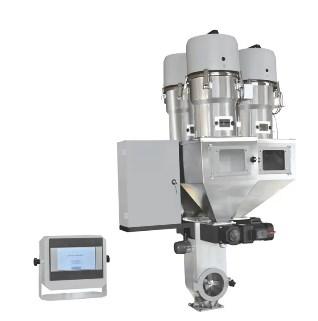In industrial processes, the precision of mixing is paramount, especially when it comes to the Volumetric Ratio Mixer. These devices are designed to blend components in precise proportions, ensuring the consistency and quality of the final product. The question of how to guarantee the accuracy of a Volumetric Ratio Mixer is multifaceted, involving a combination of design, calibration, and operational practices.
First and foremost, the design of a Volumetric Ratio Mixer plays a crucial role in its precision. The mixer's geometry must be meticulously engineered to ensure that the components are thoroughly mixed in the correct proportions. This includes the shape and size of the mixing chamber, the arrangement of the impellers, and the flow dynamics within the mixer. A well-designed mixer will have a uniform flow pattern that minimizes dead zones and ensures that all components are evenly distributed.
Calibration is another critical aspect of ensuring the precision of a Volumetric Ratio Mixer. Before the mixer is put into operation, it must be calibrated to ensure that the volume ratios of the components are accurate. This involves measuring the mixed components' volumes and adjusting the flow rates accordingly. Calibration should be performed regularly, especially after any maintenance or adjustments to the mixer, to ensure that the volume ratios remain consistent.
In addition to design and calibration, the operational practices of the Volumetric Ratio Mixer also impact its precision. The operator must follow a standardized procedure for loading the components, starting the mixer, and monitoring the mixing process. This includes checking the flow rates, ensuring that the elements are being added in the correct order, and monitoring the temperature and pressure within the mixer. Any deviations from the standard procedure can lead to inaccuracies in the volume ratios.
Furthermore, the quality of the components being mixed is also a factor in the precision of a Volumetric Ratio Mixer. If the components have varying densities or viscosities, this can affect the flow rates and the mixing process. It is essential to use components of consistent quality and to monitor their properties throughout the mixing process.
The use of advanced control systems can also enhance the precision of a Volumetric Ratio Mixer. These systems can monitor the flow rates, temperatures, and pressures within the mixer in real time and make adjustments as needed. This can help to compensate for any variations in the components or the mixing process, ensuring that the volume ratios remain accurate.
Regular maintenance and inspection of the Volumetric Ratio Mixer are also essential for maintaining its precision. This includes checking the wear and tear on the impellers, seals, and other components, as well as ensuring that the mixer is clean and free of any contaminants. Any damage or buildup can affect the flow rates and the mixing process, leading to inaccuracies in the volume ratios.
In conclusion, ensuring the precision of a Volumetric Ratio Mixer is a complex process that involves a combination of design, calibration, operational practices, component quality, advanced control systems, and regular maintenance. By paying attention to these factors, manufacturers can achieve the desired volume ratios and produce consistent, high-quality products. The precision of a Volumetric Ratio Mixer is not just a matter of technical specifications; it is a reflection of the care and attention to detail that goes into every aspect of the mixing process.
